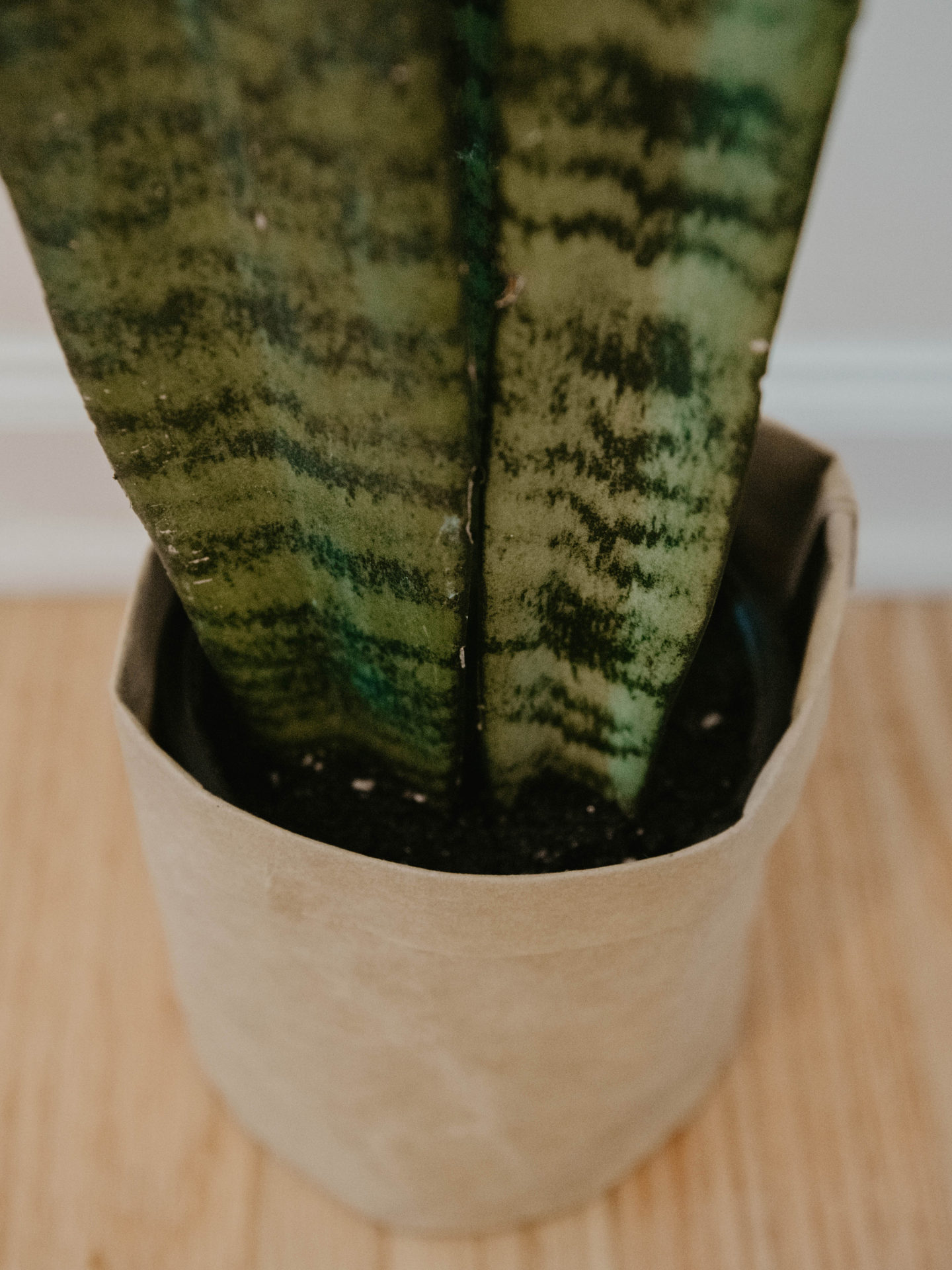
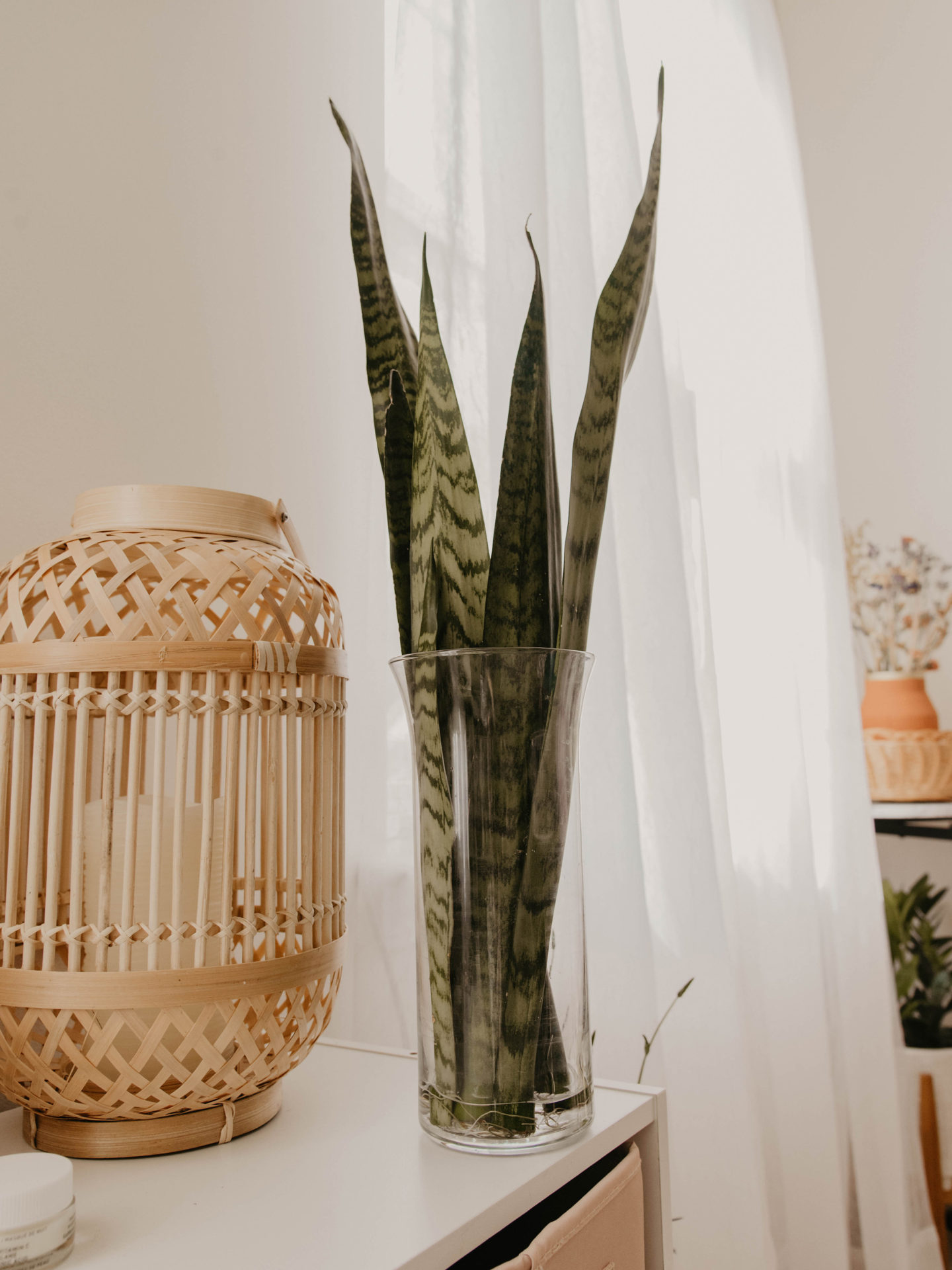
I bought my snake plant back in January.
It was actually the plant that kicked off my greenery addiction. I still didn’t really know what I was doing and I overwatered my sansevieria. Next thing you know, there were fungus gnats…every plant owner’s nightmare. I freaked out, and repotted it in sterile soil. In the process, I accidentally broke off several leaves!!! After thorough Google-ing, I decided propagating my snake plant would be the best way to save it. That is the reason why it is important to check this site and get some knowledge on gardening before blindly diving into it.
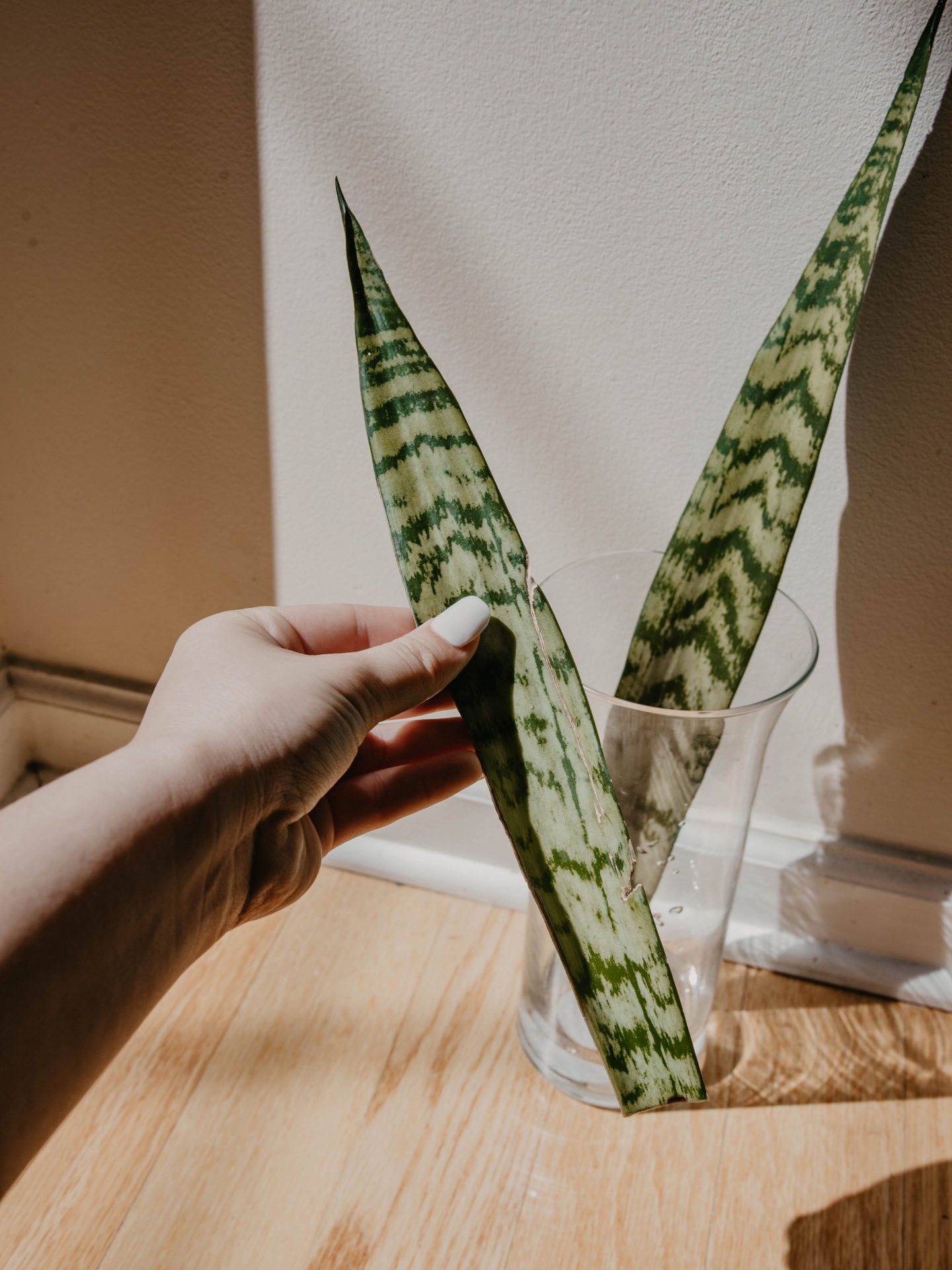
Water Propagating
You can propagate your snake plant using two methods: 1) Soil Propagation or 2) Water Propagation. I prefer water – not only can you monitor for evidence of rot, but you you get to see the root growth happen!
I took my gardening scissors, cut the ends off, placed it in a vase with enough water to keep the bottom section soaked, and waited. Pro Tip: Not all the leaves will take to root. If you want to guarantee more success, you can cut the leaves into 2-3 in sections, giving you more leaves.
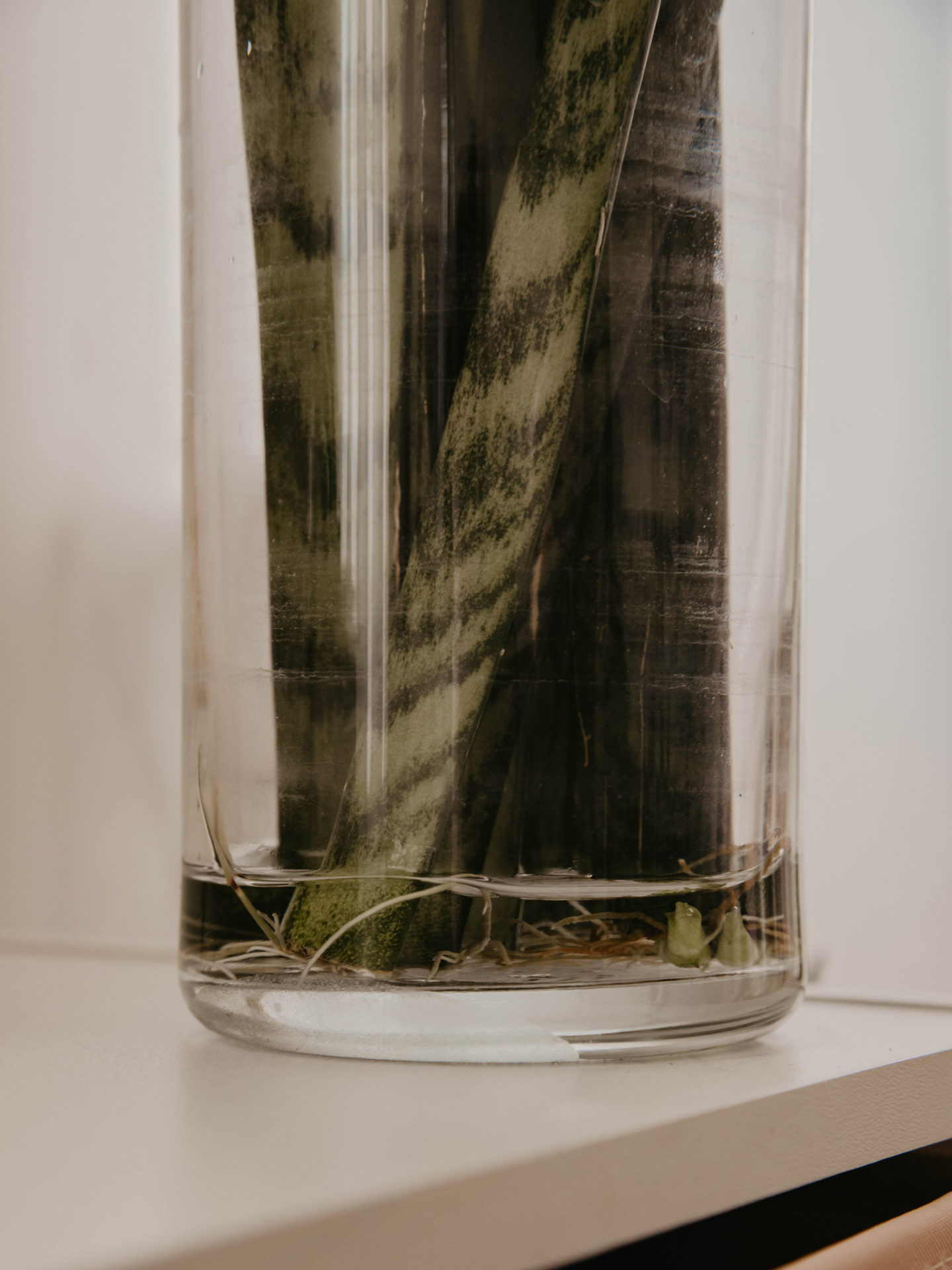
Waiting
Sansevieria are slow growers and it took about 5 months before the roots were long enough to transplant into soil. Pro Tip: You want the roots to be about two inches long before you pot it.
You should change the water in the vase frequently to prevent rot. Plants hate stale, murky water. I changed the water in my vase about twice a week. Also, I gently rinsed off the ends so the leaves were clean before putting them in fresh water. If you do happen to see any rot, cut the rot off with scissors and continue the process as normal.
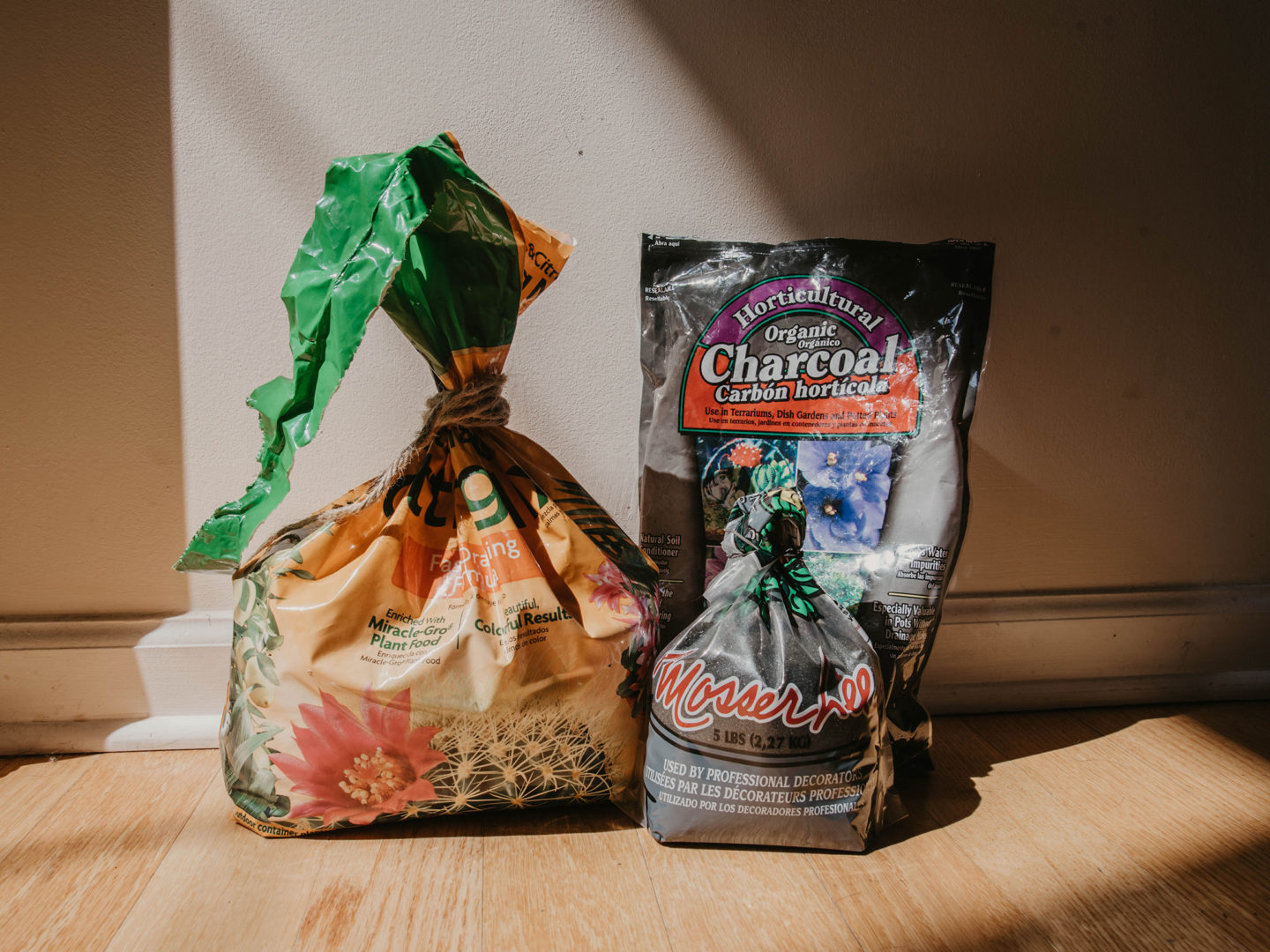
Repotting
Now that the roots are long enough, you can repot your snake plant leaves! You pick up everything you need from your local home improvement or gardening store.
- Succulent Potting Soil
- You can use regular potting soil, but snake plants are succulents and it’s better to use succulent potting soil. It drains excess water and helps prevent rot.
- Horticultural Charcoal
- Charcoal filters out impurities and is needed for any potted plants without drainage holes. My pot actually has drainage holes, but I prefer to add this to my soil to cultivate healthy plants. Just mix this with your soil before you add it to your pot or planter.
- Decorative Sand
- I use black sand to top dress my soil. This helps prevent fungus gnats from making a home in my soil. You can also use rocks or moss, but the black sand looks similar in color to soil and I prefer the earthy look.
Propagating your snake plant is easy and fun to watch if you opt for the water method. Seeing the roots grow actually helped me gain confidence in plant care. It made me see that even though I accidentally broke those leaves, I was able to grow something new from it, and now it’s thriving.
What are you propagating this season?
